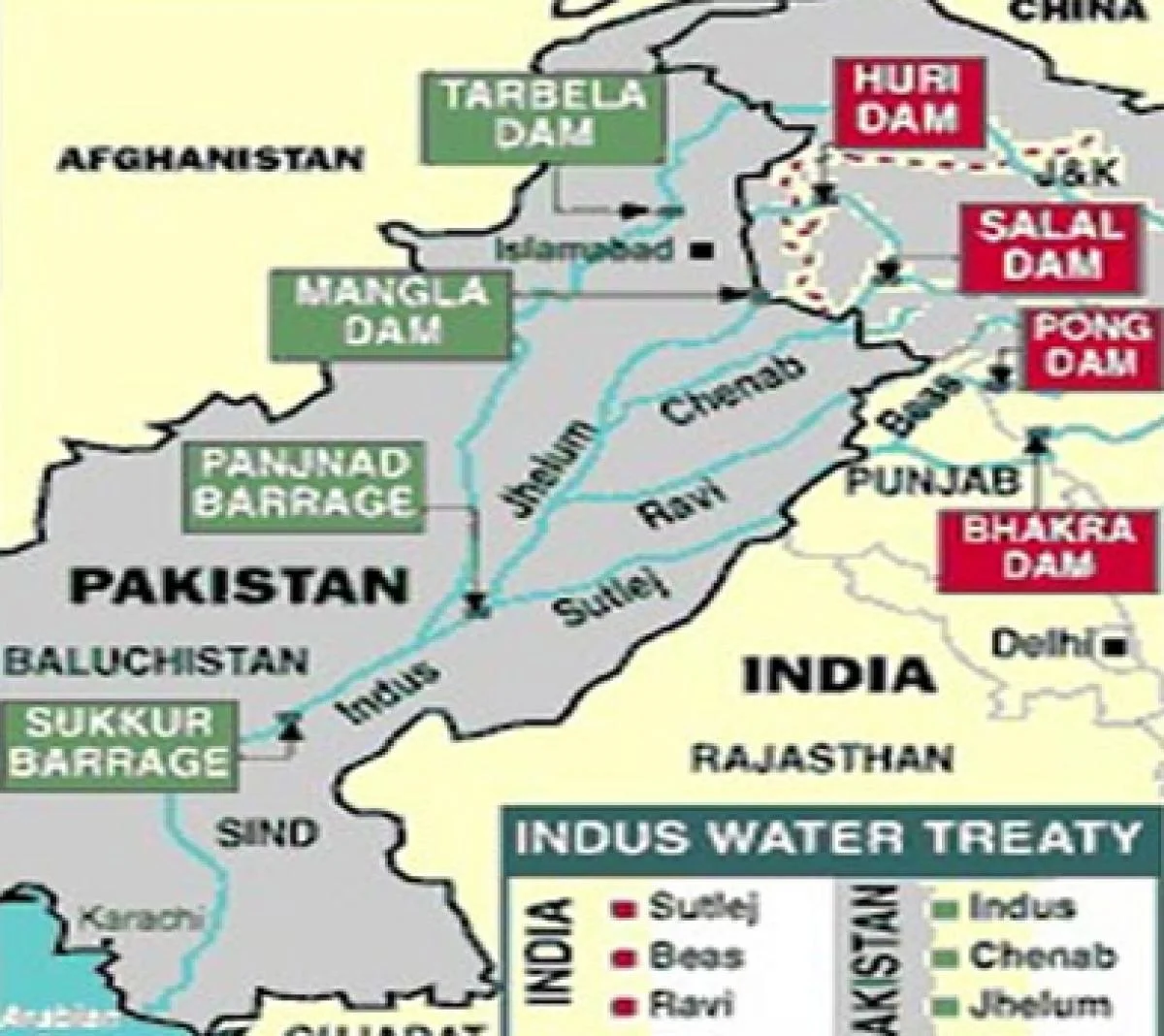Indian Polity & Constitution
In News: The two day meeting of the Indus Commissioners of India and Pakistan began in Delhi
History of the Indus Waters Treaty
- The Indus river basin has six rivers – Indus, Jhelum, Chenab, Ravi, Beas and Sutlej, originating from Tibet and flowing through the Himalayan ranges to enter Pakistan, ending in the south of Karachi
- In 1947, the line of partition, aside from delineating geographical boundaries for India and Pakistan, also cut the Indus river system into two.
- Both the sides were dependent on water from the Indus river basin
- Initially, the Inter-dominion accord of May, 1948 was adopted, where both countries, after meeting for a conference, decided that India would supply water to Pakistan in exchange for an annual payment made by the latter.
- This agreement however, soon disintegrated as both the countries could not agree upon its common interpretations.
- In 1951, in the backdrop of the water-sharing dispute, both the countries applied to the World Bank for funding of their respective irrigation projects on Indus and its tributaries, which is when the World Bank offered to mediate the conflict.
- Finally in 1960, the World Bank mediated agreement was reached between the two countries and the Indus Waters Treaty (IWT) was signed by former Prime Minister Jawaharlal Nehru and then President of Pakistan, Ayub Khan.
Key Provisions of the treaty
- Sharing Water
- It allocated the three western rivers—Indus, Chenab and Jhelum—to Pakistan for unrestricted use, barring certain non-consumptive, agricultural and domestic uses by India and the three Eastern rivers—Ravi, Beas and Sutlej—were allocated to India for unrestricted usage.
- Permanent Indus Commission
- It also required both the countries to establish a Permanent Indus Commission constituted by permanent commissioners on both sides.
- Rights over Rivers
- While Pakistan has rights over the waters of Jhelum, Chenab and Indus, Annexure C of the IWT allows India certain agricultural uses, while Annexure D allows it to build ‘run of the river’ hydropower projects, meaning projects not requiring live storage of water.

Objections:
- The treaty also allows Pakistan to raise objections over such projects being built by India, if it does not find them to be compliant with the specifications.
- India has to share information on the project design or alterations made to it with Pakistan, which is required to respond with objections, if any, within three months of receipt.
- Besides, India is allowed to have a minimum storage level on the western rivers – meaning it can store up to 3.75 MAF of water for conservation and flood storage purposes.
- Dispute Resolution Mechanism:
- The IWT also provides a three step dispute resolution mechanism, under which “questions” on both sides can be resolved at the Permanent Commission, or can also be taken up at the inter-government level.
- In case of unresolved questions or “differences” between the countries on water-sharing, such as technical differences, either side can approach the World Bank to appoint a Neutral Expert (NE) to come to a decision.
- And eventually, if either party is not satisfied with the NE’s decision or in case of “disputes” in the interpretation and extent of the treaty, matters can be referred to a Court of Arbitration.
Previous Year Questions (PYQs)
Q.1) With reference to the Indus river system, of the following four rivers, three of them pour into one of them which joins the Indus direct. Among the following, which one is such a river that joins the Indus directly? (2021)
- Chenab
- Jhelum
- Ravi
- Sutlej
Source: The Hindu














